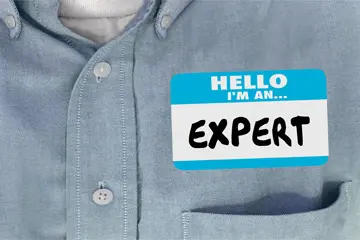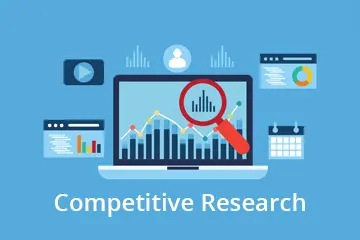Create that Valuable, Educational, Well-Formatted Content
Content is King! But if you create valuable, educational, well-formatted content it's even better. When I say this, I'm really trying to enforce the idea that blatant content for the sake of writing content isn't what you're looking to create. So, Quality Content is King! If you can't come up with any ideas, you can always start by looking at the content your competitors are creating. I'm not saying to copy their content, but if you know something different or a better way, add in your two cents. Recreating their content in your own words, with your experience. Better yet, combine what might have been said in multiple places from your view point. This not only shows you know what you're talking about, but allows customers to find you when they're looking for answers.
6 Step Process to Create Content
- Target Your Audience's Questions
- Don't worry about giving information away for Free
- Be You and Show It
- Set a Path for the Reader
- Create Helpful Tools, Lists, and Resources
- Test, Review, and Seek Feedback
As you build your content, stay on topic and don't go too wild on tangents. You can always circle back and expand your thoughts with another piece of content. Let's dive deeper into each step.
1. Target Your Audience's Questions
The first major key to writing great content is to target your Audience. You can do this by targeting the questions that your audience has which your product or service answers. If you don't know what questions that they have, you can ask them with surveys, polls, or even directly asking them. You can also read what others are writing, find gaps in the information, and fill those gaps with your own angle or idea. And don't forget to check out the comments on the content you're reading, you might find questions their readers are asking.

2. Don't worry about giving information away for Free
It's going to be hard to get someone to buy from you if they can't see that you actually have the answers to their problems. People regularly put their problems into a search engine hoping to find an answer. Free content will not just educate them, but it will show them You! If tailored correctly, they'll easily be able to see why they should connect with you versus your competition. Once they start to connect with you, they'll start to develop additional questions. Within your content, you can easily target these additional questions and provide the answers before they decide to not do business with you. Your free samples will allow you to build trust and place yourself as an authority on the subject. And providing them with use cases can even answer the question, "but how do I do this for me?", so they can see how it applies directly to them.
3. Be You and Show It
People prefer to work with people they want to be around. By providing great content that shows off who you are and how you work, you will show your personality. Using personal sayings and adding in your personal experiences will do that. This reminds me about reading "Pick Up Artists" when I was younger. Specifically, in that getting a girl to go on a second date was often as easy as taking her to a second or third venue on the same date. This provided multiple "place" memories that they would remember fondly and be more inclined to agree to another when I called to go on another date. In practice, this actually worked quite well. By "being you", your readers will get to know you. If they like what they're reading, when they have additional questions and they see you have more answers, they're more likely to read them.

4. Set a Path for the Reader
One of the worst things you can do to your reader is plop a wall of text in their face. The second is pushing content out in an unformatted matter. Organizing your content with lists and processes can help the reader find what they're looking to read. It'll also format the page for readability. Make sure to include title and sub-titles so that each area can easily be understood. Include lists, quotes, and even images or short videos to help break the content up even further. Also, make sure that each paragraph of content isn't too long. Typically, you'll want to keep each paragraph to around 150 words or less (Source: Yoast). This'll ensure that the content is built around singular subjects and the reader can "get the point" quickly.
What's next?
Now, if potential customers don't know what to do next, they'll probably search for it. Which means, they'll be leaving your website. If you provide them with their next steps instead, they'll know exactly what they should be doing. While this can be done with a simple "Next" button, it's often better to hold their hand a little more and direct their thinking. Try to conclude your content with the idea of what's coming next. If that content is yet to be written, give them a way to say in the loop and catch your content when it gets released. While we're on the subject, don't forget to hit the like button below and stay up to date on my latest blogs.
5. Create Helpful Tools, Lists, and Resources
Diversify! Some people just don't like reading. So create your content with multiple methods, This'll allow you to reach people in multiple channels. It'll also allow you to repurpose well performing content to increase your engagement. And sometimes, it's just about hitting someone at the right point in their journey. For example, infographics and blogs that answer customer questions are great for the Top of your Funnel. While customer stories and demos work best at the bottom. I like the ToFu, MoFu, BoFu way of thinking about your content.

I'll go into more detail about creating a content marketing funnel in the future, but the above infographic should give you an overview on what to expect. You'll notice that video is on each step, just to give you a hint at how powerful a tool video is for any step in the funnel.
6. Test, Review, and Seek Feedback
You've done a lot of hard work. You've put together a number of resources and walked your prospects through each step, now what? Now you look back over what you've created and evaluate how it did. Did a certain post or article get a lot of attention? Did you get tons of shares on your infographic? Look for what has made an impact and then reach out to your audience. Your audience will give you feedback that can help determine new and revised content that you should create.

Wrapping Up
Companies that set out with a plan to strategize how to best reach their customers are able to get much more engagement. Understanding your audience and tailoring your content to suit them and how they consume information will make the most of your marketing efforts. As you're doing this, you'll want to make sure that your website can be found. Typically, this is referred to as Search Engine Optimization and I'll be covering that in my next blog, next week. There are other ways that you can get your content out there. I'll be covering a couple additional ways that can help your content reach the right audience at the right time. So, hit that like button below and stay in the loop. I'm just getting started and I've got a lot of information to share. If you've got any questions, always feel free to contact me.
 Pinterest
Pinterest Twitter
Twitter Facebook
Facebook

